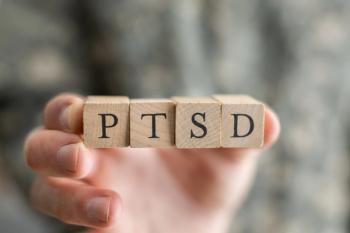
5 Key Take-Aways About PTSD Treatment: A Closer Look at MDMA
At least 1 in 2 people experience trauma at some point in their life, and a subset of those individuals will develop PTSD.
At least 1 in 2 people experience trauma at some point in their life, and a subset of those individuals will develop posttraumatic stress disorder (PTSD), Psychiatric Times’ Editor in Chief John J. Miller, MD, explained in a recent PTSD video series. Variables that influence the development of PTSD include genetic and epigenetic vulnerabilities, and lack of psychosocial supports. Up until 25 years ago, there were no medications that were US Food and Drug Administration (FDA) approved, and there is still a need for treatments that yield better outcomes for these patients.
Exploring Comorbidities and Symptom Clusters
PTSD has 3 main subsets of symptoms: (1) reexperiencing, (2) cognitive and depressive symptoms, and (3) hypervigilance. Reexperiencing often blindsides the patient, said Miller. The brain makes an association between something in the patient’s everyday life and the traumatic event, which brings on a flood of emotion and causes significant distress. Reexperiencing can also manifest as nightmares and flashbacks during the night. Cognitive and depressive symptoms can cause impairment and memory and affect the patient’s mood.
“If you are carrying around the residues of this traumatic experience, you tend to see life through a dark window rather than a clear window,” said Miller of the second cluster.
Hypervigilance causes the patient to lose sleep and overreact to something as small as a tap on the shoulder due to the perception of threat. Hypervigilance can escalate to hyperactivity and potentially aggression based on self-protective instincts in the patient.
“The bottom line is, we do not have medications that do a good job at targeting any of the 3 of these clusters, because ultimately, the trauma is still inserted into the emotional brain,” said Miller.
Understanding the Current Treatment Landscape
PTSD is a rather large and diverse syndrome with a lot of comorbidities. In 2024, there are only 2 medications that are FDA-approved to treat PTSD: sertraline (Zoloft) and paroxetine (Paxil), both of these being in the SSRI class of medications.
“They work—but they don’t work great. People will have some improvement, but it is rare that you see a robust improvement, especially for people with severe or repeated trauma,” said Miller.
Addressing Unmet Needs in PTSD Treatment
MDMA-assisted therapy may offer a solution. If approved, it will be the first new PTSD treatment in over 2 decades.
“There’s a lot of research going on and we have a long way to go. We’ve been hearing a lot about MDMA, also known as ecstasy, as a medication that has been widely studied with phase 2 and phase 3 clinical trials that have shown dramatic improvement in outcomes of the PTSD symptoms compared with placebo,” shared Miller.
MDMA is being used as a short-term tool, Miller explained, in a long-term comprehensive therapy setting to help facilitate access to really difficult emotions: “The purpose of the MDMA is to allow the brain to enter a physiological state where it is more comfortable, and allow the traumatic experience to rise up into conscious awareness with much less distress. It makes the memory of the trauma more accessible that have been hard to access through other traditional therapies and approaches.”
Mental health clinicians should be excited about the prospect of new tools to treat this complicated disorder, Miller said, as PTSD’s impact extends beyond the patient’s quality of life: “It trickles out into affecting the people around the patient, like their family and friends. It interferes with functioning at work and may create difficulty in retaining jobs. In many cases, sadly, it can lead to homelessness or incarceration. It can greatly affect interpersonal relationships too.”
First Do No Harm: Safety Issues
One of the most important parts of the process when a treatment is seeking FDA approval is the development of a risk, evaluation, and mitigation strategy (REMS), which mitigates any possible risks. MDMA poses similar risks to esketamine (Spravato), which provides a clear model for an effective REMS protocol.
“My bigger concern is that when the FDA does not approve a drug because of concerns that could be mitigated by a REMS protocol, they will open up Pandora's box to finding and getting similar treatments from the dark market that are not being regulated, are not being synthesized in a known manner, and are not being monitored closely. That can open the door to a lot of bad outcomes,” said Miller.
Looking Forward
Ultimately, Miller shared, the need for new tools in PTSD necessitates trying alternative methods; but there must be a rigorous safety protocol in place. “The goal is to do no harm. The goal is not to never treat anybody. If we're going to treat someone, and there are risks. We want to mitigate the risks, and we want to get informed consent, and we want to make sure we do it in a safe way.”
Newsletter
Receive trusted psychiatric news, expert analysis, and clinical insights — subscribe today to support your practice and your patients.











